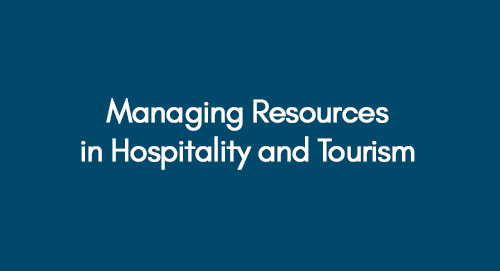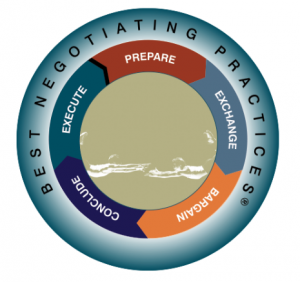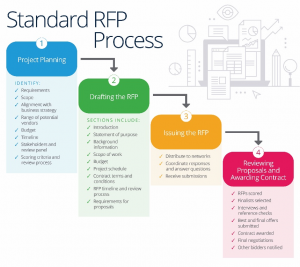
Managing Resources in Hospitality and Tourism
January 14, 2021
THE COMPANY REPORT on Sainsbury’s UK
January 14, 2021Introduction
This assignment aims to study the significance and relevance of negotiations skills in the organisational context. In this assignment, negotiation process, key stakeholders, and the rationale for carrying out a negotiation process will be discussed. Later in this assignment, the tendering and contract documentation process will be discussed. Lastly, in this assignment, the recommendation will be discussed for the successful tendering. From a perspective of an advisor, the following discussion will advise a new start up business on how to pitch and negotiate successfully.
Discussion
LO-1
What is Negotiation?
Negotiation is a process of finding an acceptable solution to resolve the complications and conflict between the two authoritative parties. The negotiation process is used in certain situations where it works more efficiently and effectively (Savignon, 2018). The specific conditions when the negotiation must be practised are when the two parties face conflicts in interest; both parties agree to negotiate to come up with a better solution and when the parties decide to work together on a certain situation to avoid conflicts.
In an organisational context, a negotiation process is a formal concern that is carried across the proverbial bargaining table. In such business negotiations, commonly the businesses often negotiate over the contractual terms and/or prices. Otherwise, the negotiation process could also be informal, for instance, a collaborative meeting between two informal parties to get the job done. Routine negotiation within or out of the organisation is a part of Manager’s everyday life. There are three main types of negotiations, which are: distributive negotiation, integrative negotiation and compromise. Distributive negotiation is a process in which the parties claims and compete on a particular sum of value. This is also known as zero-sum negotiation. It happens in a situation where two or more parties bargain and resolving conflicts. In the distributive negotiation, one party must win and others must lose. On the contrary, integrative negotiation occurs when parties do not have any conflicts with each other, but they have a common problem. Through integrative negotiation, neither of the parties lose while gains are equally distributed among them. Integrative negotiation often results in a win-win situation.
Key Stakeholders for Negotiation
To ensure the success of the negotiation process, the managers are required to understand how to manage his/her, direct stakeholders. Stakeholder management is a process through which a manager communicate with the other party and expects to have their interests. A manager must know how to deal with the key stakeholders of the matter while pitching a new idea or project to them (Thaler and Levin-Keitel, 2016). A manager desires to influence the negotiating party to influence them to reach win-win results.
For a manager, negotiating with the direct and indirect stakeholders is difficult. For an organisation, stakeholders such as employees, suppliers, business partners, competitors, customers and the state are the main stakeholders. A manager needs to align the interests of these stakeholders while making a negotiation process successful (Payne and Calton, 2017). For instance, a company needs to negotiate with the suppliers in order to bargain for the optimal pricing and quality of supplies. In such situations, a manager must be careful regarding the position and power of the suppliers to ensure the win-win situation. Moreover, a manager must know how to negotiate with each stakeholder.
Key Steps and Information Required for Negotiation
An effective negotiation process requires a five steps negotiation process to practice. A manager pays close attention in planning the negotiation and gathering the related information to convince the opposite parties.

Figure 1: Five Steps of Negotiation
Prior to negotiation meeting, a manager must prepare for the terms and conditions required to negotiate, gather all possible information and prepare bargaining proposal for negotiation (Pillar, 2014). The following are the five steps of effective negotiation process.
Step 1: Preparation and Planning
The preparation and planning stage will enable a manager to identify the possible values. In this stage, a manager begin to identify and understand the stakeholders or opposite party interests that helps a manager planning the negotiation.
Step 2: Exchange of Information
The exchange of information occurs when a manager focus on the other negotiating party, share information with them and assess their interests to highlight the point of argument/negotiation to be bargained in the meeting. This step enables a manager to build trust and rapport to make the other part feel comfortable during the meeting. Moreover, at this step, a manager must require to study the other party’s organisational values, culture, personality and interests to prepare more convincing negotiation.
Step 3: Bargain
In the bargaining step, a manager considers the ‘give and take’ solutions. A manager must understand that for an effective bargain one party should give some benefits and values in order to take some in return. A business tries to manage a concession while bargaining in order to satisfy the interest of both parties and to build long-lasting and fruitful outcomes. In this step, one party creates value to bargain in order to take value.
Step 4: Conclude
After bargaining the value, negotiation process reaches to an agreement. To settle down on a certain bargain, it is important for a manager to know whether or not the negotiation part has the capacity to follow the negotiation. At this step, a manager note down the common interests to produce an agreement summary to bring in the commitment.
Step 5: Execute
At this step of the negotiation process, both parties implement the agreement. A successful implementation of the negotiation process is said to provide the future negotiation and long-term fruitful relationship opportunities.
Rationale for the Negotiation Process
Negotiation skill is an essential part of doing a business. In today’s competitive and evolving business market, a firm’s ability to negotiate is highly valued. However, according to a recent UK study, a majority of the business failures and losses are found as a result of poor negotiation skills (Paquette, 2016). Evidently, negotiation skills are important for several reasons due to which negotiation process has gained fame in recent years.
A negotiation process enables an organisation to set the situation in a way that it benefits every stakeholder (from clients to employees). Negotiation process enables to create a win-win situation and often leads to development on the solution in integrative negotiation. Moreover, the negotiation process helps the organisation in improving its bottom line objectives. For instance, if an organisation is determining a 10% profit margin, the negotiation process with the staff can result in a reduction in overheads that ultimately results in higher profits. Regardless of issues an organisation confronts, negotiation helps in resolving the conflicts between the organisations, and stakeholders.
However, to carry out fruitful negotiation outcomes, a company must have all the relevant information about the problem and conflict. Also, a company should also emphasise on understanding the other negotiating parties to propose the best possible way out for the conflict
LO-2
RFP process and relevant types of documentation
Every organisation in every sector has different needs. An organisation cannot work in isolation with the industry. However, to sustain in the market these companies interact and negotiates with each other on certain terms. In this way, wherever the interaction and negotiation take place, one company offers value to another company. On acceptance, the negotiating parties “requests for proposal” (RFP) document. An RFP document outlines the desired value to be negotiated that could be in terms of price quotation and product/services. The RFP document enables both negotiating parties to identify and accomplish the strategic goals (COUNTY, 2014). By developing an RFP, a negotiation process begins (Sabin, 2016). At this stage, preparation and planning begin where a company signals all the potential bidders to propose their best negotiable value with the company.
By definition, a “Request for Proposal” (RFP) is a highly formal document used by organisations while buying a value, and good/services. This document identifies and outline the company’s requirement and used it to solicit bids to identify the best partner.
Standard RFP Process

Figure 2: RFP Process
The RFP process begins with the planning about what a company wants and how it will help it to grow. At this stage, a company looks into the requirements, scope, alignment, budget and timeline of a project. On the second stage, a company prepares a draft proposal including the introduction, background, purpose of the project. Thirdly, organisation issue the finalised draft and makes it open to bidders. From the time of issuance of proposal, a company receives bids on which it contracts and negotiates with the potential partner.
The relevance of other documents
Other than RFP, there are two other formal documents needed at the time of pitching and negotiation. First, “Request for Information” (RFI) is a business document/process that is issued before RFP in order to survey the market for potential partners. RFI helps a business in gathering all the relevant information about the potential bidders. Whereas, “Statement of Work” (SOW) is a document that is used after issuing RFP. In SOW, the company finds a detailed description of requirements of the potential client. SOW identifies and discusses the roles and responsibilities of each party. SOW is a legal binding contract between the two parties (Dunning, 2018).
The relevance of the contractual process
A contractual process binds two parties in a written contract, agreement and any legal obligation upon signing, by the authority from each party. A sound contract plays a crucial part in the negotiation and contracting process. An effective and detailed contract enables the parties to manage a particular project more efficiently (Antras, 2015). The contract has significant importance in business as a proper contract as it outlines the assigned roles and responsibilities of each party, it offers a company a sense of security that neither of the partners can back out the contract, and it provides the insight on how a problem will be sorted by both parties.
Without a legally binding contract, a company cannot rely on the other party to carry out tasks for them. In managing a business in partnership, a contractual process is extremely important. A contract is developed against the legal binding to highlights the major roles and obligations of the parties (Van Den Hurk and Verhoest, 2016). If either partner fails to perform its assigned obligation must be penalised.
RFP process in the organisational context
In the contemporary business market, organisations are highly reliant on each other in terms of product/services and ideas. Therefore, the business tends to build associations with each other on the ground of mutual benefits through a negotiation process. On a successful negotiation meeting, the companies sign a legal binding to perform contracted obligations.
Taking an example of a software company, the presence of regular negotiations and pitching are evident. The software industry is exposed to regular purchasing and negotiation. For such organisations, RFP and a contractual process is a critical step towards better negotiation and performance. For such businesses, an RFP is considered as a cornerstone. It enables them to compare the functionality, features and price quotations across many potential vendors. In such organisations, the key stakeholders also participate in selecting and decision making, ensuring whether or not the interests and needs are met. In addition, a clear contractual process and formal binding provide a clear focus on the criteria for building a partnership.
Recommendation for successful tendering
A contractual agreement empowers a company to minimise the risk of cheating, and frauds. Thus, a company requires to pay special attention to tendering. For organisations to set the deal successfully, there are certain recommendations and tips to be followed. These tips can enable them to conduct an efficient negotiation, leading to successful tendering.
For successful tendering, it is advised to a start-up business to must-read terms and conditions of a term carefully, submit the tender on time, quote and negotiate the price competitively, confirm whether the recipient of tender received it on time, and make sure to keep a copy of all the records and documents safely. By doing so, organisations can optimise the risks of failure and contractual frauds. However, it results in effective negotiation and contractual outcomes.
Conclusion
This assignment presents the significance of negotiation skills that have been used by the organisations to improve its performance and revenues alongside. Moreover, throughout this assignment, it is analysed that the selection of a right bidder/ partner is important for a business. If a company fails to select the right partner to get in the contract, it might face failures. However, to minimise the risk of frauds and failures, the assignment recommends developing a legal contract between the parties. From this assignment, it can be concluded that negotiation skill is an essential part of doing a business. In today’s competitive and evolving business market, a firm’s ability to negotiate is highly valued.
References
Antras, P., 2015. Global production: Firms, contracts, and trade structure. Princeton University Press.
COUNTY, W., 2014. Request for Proposal (RFP). Cell, 714, pp.614-5859.
Dunning, T., 2018, March. CI2030: The response to NSF's request for information on future needs for advanced cyberinfrastructure. In ABSTRACTS OF PAPERS OF THE AMERICAN CHEMICAL SOCIETY (Vol. 255). 1155 16TH ST, NW, WASHINGTON, DC 20036 USA: AMER CHEMICAL SOC.
Paquette, J. ed., 2016. Cultural policy, work and identity: The creation, renewal and negotiation of professional subjectivities. Routledge.
Payne, S.L. and Calton, J.M., 2017. Towards a managerial practice of stakeholder engagement: Developing multi-stakeholder learning dialogues. In Unfolding stakeholder thinking (pp. 121-135). Routledge.
Pillar, P.R., 2014. Negotiating peace: War termination as a bargaining process (Vol. 695). Princeton University Press.
Sabin, E., 2016. Request for Proposal. In Outsourcing Clinical Development (pp. 65-78). Routledge.
Savignon, S.J., 2018. Communicative competence. The TESOL Encyclopedia of English Language Teaching, pp.1-7.
Steele, P.T. and Beasor, T., 2017. Business negotiation: A practical workbook. Routledge.
Thaler, T. and Levin-Keitel, M., 2016. Multi-level stakeholder engagement in flood risk management—A question of roles and power: Lessons from England. Environmental Science & Policy, 55, pp.292-301.
Van Den Hurk, M. and Verhoest, K., 2016. The challenge of using standard contracts in public–private partnerships. Public Management Review, 18(2), pp.278-299.
Get 3+ Free Dissertation Topics within 24 hours?


























